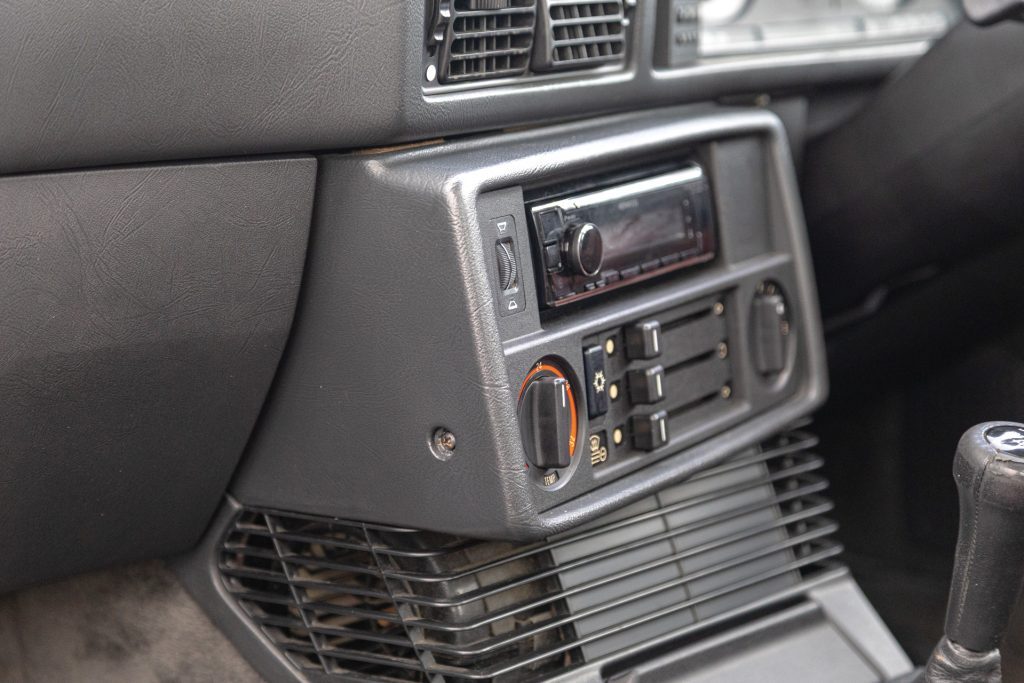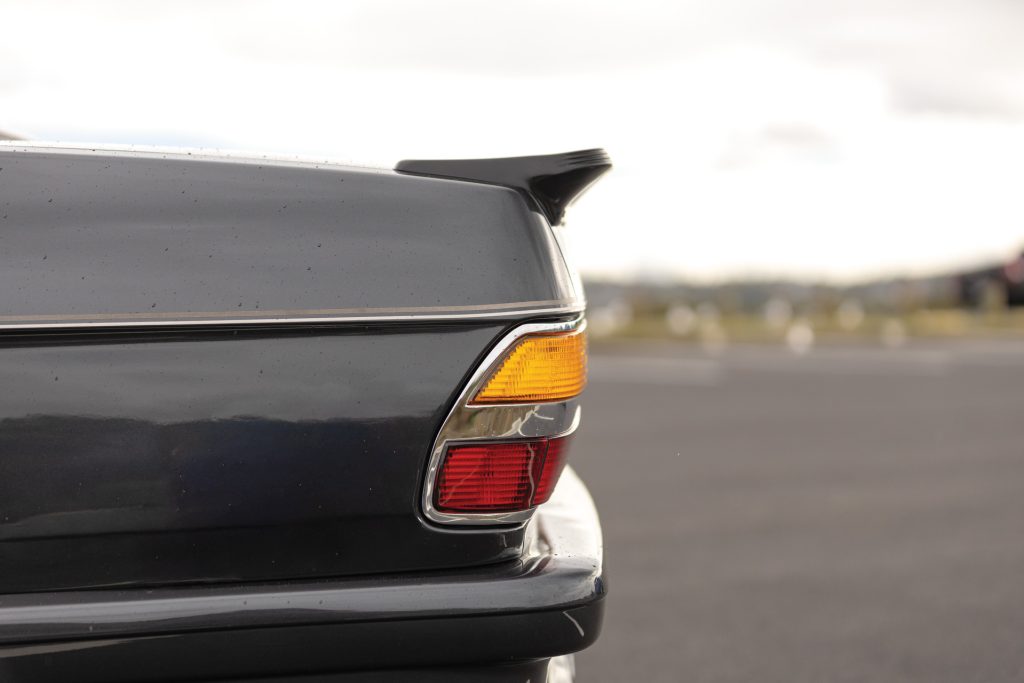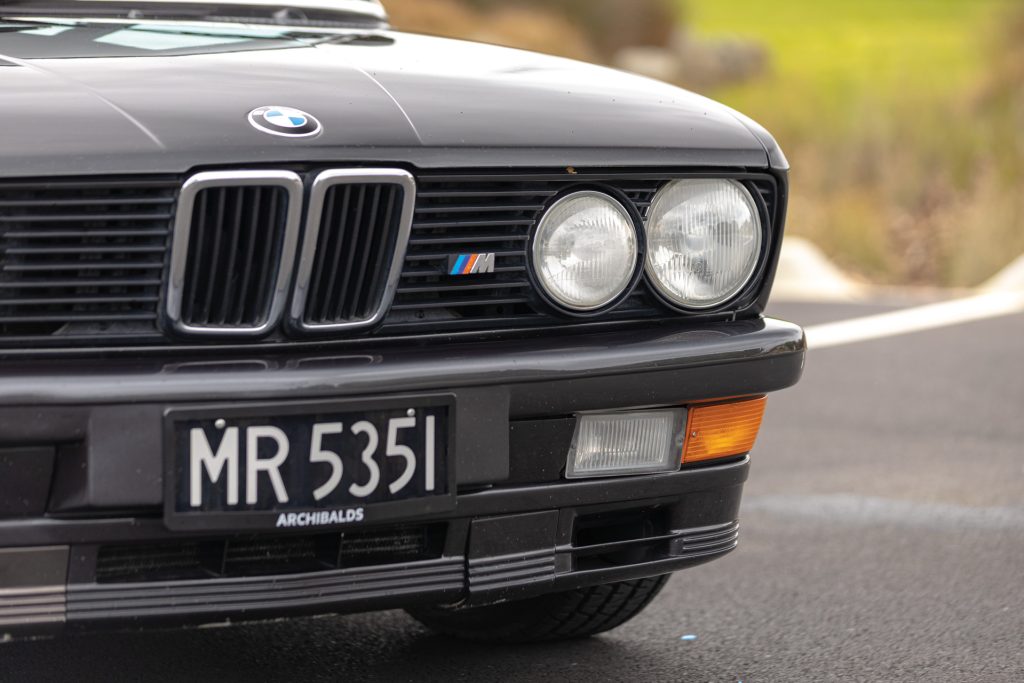1986 BMW M535i Review
Words: Kyle Cassidy | Photos: Alex Schultz
BMW’s 5 Series from the early eighties wasn’t a common car in New Zealand at the time, especially the Motorsport variants of the 535i model. Here we detail a NZ new example with strong family ties.
The BMW E28, built from 1981 to 1988, marked the second generation of the 5 Series and a step forward for the brand. It was the first BMW designed with the aid of a computer, extraordinary really given the company only possessed one at the time. Engineers apparently borrowed it from its usual duties in the payroll department, using it to run calculations for the body and powertrain.
The E28 employed MacPherson struts up front, complete with dual lower links, a design borrowed from the larger E23 7 Series to help improve steering feel. At the rear, a semi-trailing arm set-up delivered BMW’s desired balance between agility and ride comfort. Most models came with ZF speed-sensitive recirculating ball steering and, by 1984, anti-lock braking was added to the four-wheel discs.
The engine mix used inline four and six cylinder units, while at the top of the range sat the 3.4-litre M30 straight-six, producing 160kW and 310Nm. That was enough to propel the 535i from 0–100km/h in 7.2sec.
It wasn’t actually the top model per se as the E28 range spawned the first M5. And for comparison’s sake, the M5’s M88 engine, only 23cc larger than the M30, delivered a hefty 210kW and 340Nm.

Not quite an M5
Launched in 1985, the M535i paired the 535i’s drivetrain with a selection of BMW Motorsport upgrades. These included Bilstein dampers, shorter, stiffer springs and thicker sway bars. It also gained unique bodywork including flared sills, a discreet rear spoiler and a deeper front bumper to distinguish it from lesser models. Inside, owners were treated to sports seats, a thick-rimmed steering wheel and some M badging to remind them they’d paid extra.

Power came from the Motronic 1.1-controlled 3430cc six-cylinder borrowed from the 635CSi, delivering 160kW. Buyers could choose from a range of transmissions, including a manual for the purists. Built on the same production lines at Dingolfing and Rosslyn as other E28s, the M535i retained everyday usability but stood out with its motorsport-inspired character.
A total of 9500 units were produced, making it a rare but important link in BMW’s performance lineage. While it lacked the raw pace of the M5, the M535i offered something unique: the refinement of an executive saloon with the attitude of a sports car. In many ways, it was the archetypal “gentleman’s express,” and it remains a desirable E28 variant for enthusiasts today.
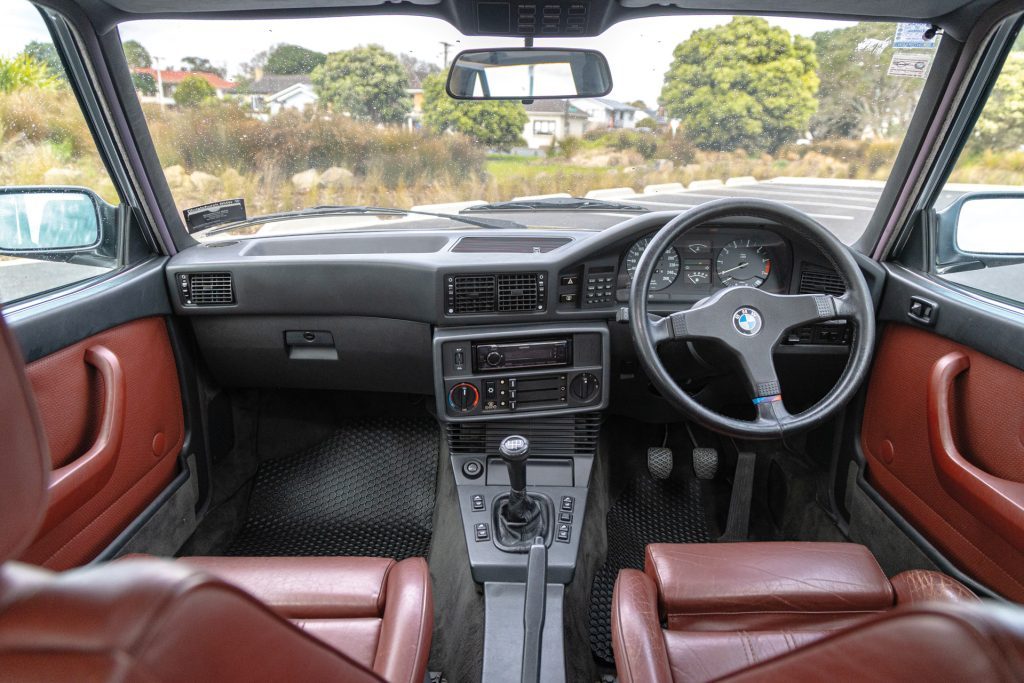
Not many in NZ though
This particular 1986 Motorsport 535i is just one of two New Zealand-new models registered that year. It’s currently owned by Aucklander, Sam Early, who happens to be the second Early custodian of this machine.
“My grandfather bought this new from Archibald’s in Christchurch when they had the BMW agency. Grandad spec’d this car, the colors, all the options,” Sam tells us. The other M535i by the way, was for the director of BMW New Zealand at the time.
Sam’s grandfather owned it for about 10 years, his daily executive express in the eighties.
“I remember both my Dad and Grandad talking fondly about this 535i. They said it was the car he should never have sold. I remember seeing many photos of it and it was my mum and dad’s wedding car. It’s such a distinctive BMW, black with those metric alloys and the red interior.”
And so it caught Sam’s eye when he was casually perusing TradeMe one day in 2021.
“I saw this black E28 BMW with a red leather interior and thought, that’s Grandad’s car.”
He did some research and determined that the car was the very same one.

“I bought it right there and then. I flew to Christchurch to pick it up, and told my old man to meet me in Wellington. I picked him up from the airport in it as a bit of a surprise. He was grinning from ear to ear when he saw it. It was an emotional moment for him to see it again.”
Luckily, before Sam drove it North, the old owner delivered a heap of paperwork for the car. “There was a file full of all the original invoices, the window sticker, even some handwritten notes from my grandfather about how he specced it and some other cool memorabilia.
“That second owner really cherished it as well, keeping the service up to date and through the correct channels, which makes the car more desirable now.”
Sam is just the third owner of what he describes as an immaculately maintained, 100 per cent original survivor car.
“It’s done 152,000 kilometres and has been well looked after. It’s not really wanting for anything.”

The 535i had three transmission options at the time, one being a four-speed ZF auto, complete with Sport and Economy mode, or a five-speed manual. The three-pedal option came with two choices; a sportier Getrag 265/5 with a dog-leg first gear, closer ratios and a direct-drive fifth gear, or the standard five speed with an overdriven fifth gear.
“Grandad lived in Darfield at the time and was commuting daily to Christchurch, so lots of open road mileage, which is why he spec’d the overdrive manual gearbox.
“At the time he had the option of a 635 CSi or a 7 Series, but he opted for the M535i as there were only two of them allocated to New Zealand, and it was family friendly. He paid $100,000 for it in 1986.”
Sam says he was a BMW guy in his early driving years.
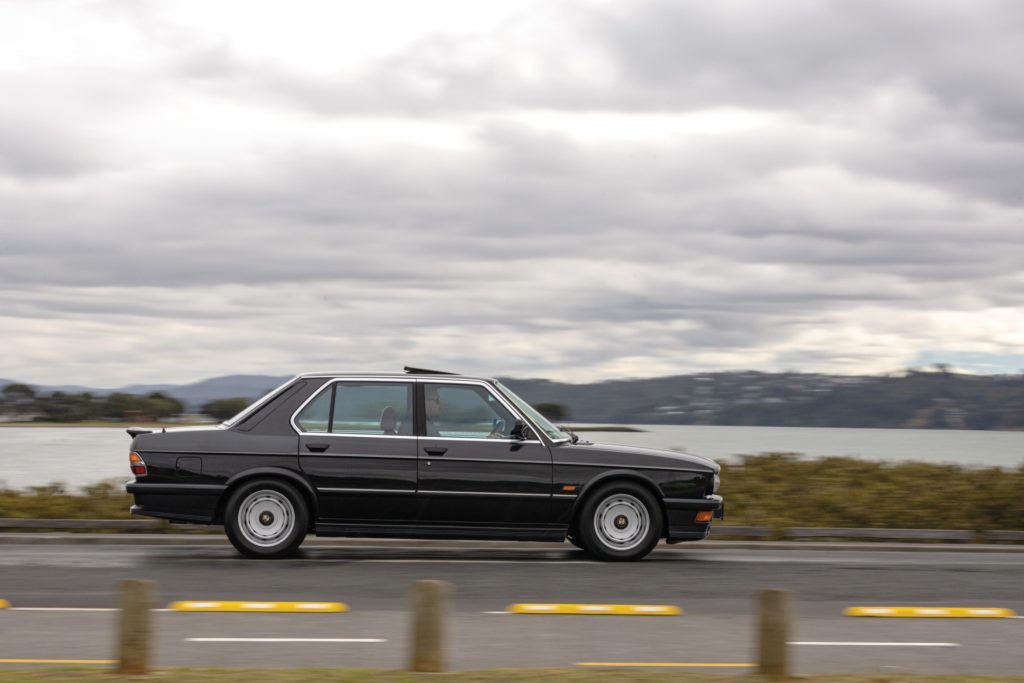
“I’ve had four E30s, and I did a V8 swap with one. So the 5 Series from that similar era was always something I quite liked. It’s a classic now, but you could still drive it daily if you wanted to. The only thing it really needs is a bloody cup holder. But it’s usable, comfortable and it’s got enough power. It was great driving it back from Christchurch.”
This one still has its original metric alloys which are shod in new 220/55 390 TRX tyres. “The Motorsport wheels and Michelin tyres are a bit interesting. You can still buy the TRX tyres new but they are horrifically expensive, at about a thousand bucks a pop. I’ve considered getting an aftermarket set of wheels but I just think it looks great as it is; they really set the car off.”
Apart from the family connection, Sam likes the uniqueness of it.
“When I take it to car events, most people say it has to be an import as there were no Motorsport 535s sold here. But yeah there were two, this is one of them, I’ve got the ownership papers to prove it. And it’s certainly a car I’ll never sell.”

The rise and fall of Michelin’s TRX
From the late-1960s, European carmakers sought tyres with a reduced sidewall height to help improve handling and steering precision. However, while lower profile tyres aided handling, it came at the expense of ride comfort. And, lower profile tyres generated more heat within the sidewall, compromising safety and durability. By the 1970s, rising car performance meant the need for tyres that could balance grip, comfort and safety was greater than ever.
Michelin, already renowned for inventing the radial, responded with the TRX, launched in 1975. The name stood for tension répartie (distributed tension), reflecting its design philosophy. Unlike conventional tyres, which were simply mounted on standardised rims, the TRX was the first fully integrated tyre-and-wheel system. The rim and tyre were engineered together as a matched unit, using millimetre-based metric sizing instead of inches. The unique bead of the tyre and the design of the rim helped distribute stresses more evenly, enabling smaller sidewalls without the usual loss of comfort and addressed the overheating concerns.
This helped deliver a combination of ride quality, high-speed stability and grip unmatched at the time. It was a particularly attractive solution as European carmakers pushed into higher-performance territory. Manufacturers including BMW, Peugeot, Citroen, Renault, Ferrari and Ford adopted the TRX on their flagship models. Cars such as the BMW 535i, Peugeot 505 Turbo, Ferrari 512BB, and Renault 25 V6 Turbo left the factory wearing Michelin’s revolutionary rubber. Motorsport also embraced the design, with TRX tyres appearing in endurance racing and rally competition.
Yet what promised to be the future of tyres soon revealed its flaws. The TRX system required unique rims, meaning standard tyres couldn’t be fitted. Owners were locked into Michelin’s ecosystem, unable to shop around for cheaper or more readily available alternatives. TRX tyres were not only more expensive but also harder to source than conventional radials. Their metric sizing was implemented so that regular tyres couldn’t be mounted to TRX specific rims, and vice versa.
Meanwhile, tyre technology outside the TRX system advanced quickly. By the mid 1980s, mainstream radials had caught up in grip, safety, and comfort, without the cost or compatibility drawbacks. Car makers began to abandon the format, and by the 1990s the TRX was effectively obsolete.
Enthusiasts today admire its engineering brilliance and period-correct fitment on classic cars, but limited availability and high replacement costs can frustrate. Michelin continues to produce small batches through its heritage division to support these purists however.



